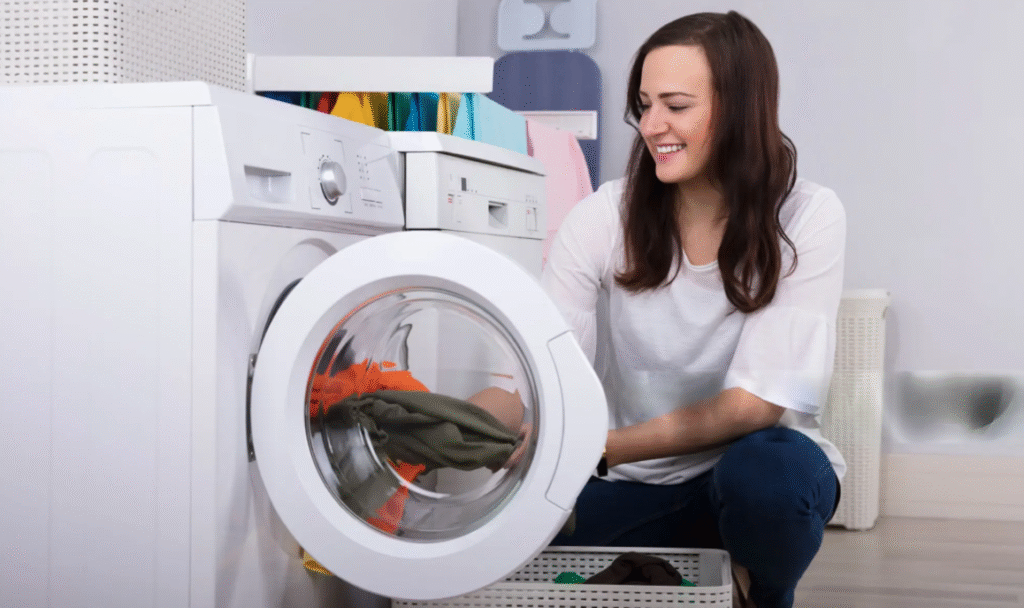Discover simple washing machine hacks to save electricity, cut power bills, and make your laundry routine eco-friendly without sacrificing cleanliness.
Doing laundry is one of those household chores we cannot escape. Week after week, the washing machine runs, cleaning our clothes and making life easier. But while it is convenient, it is also one of the most energy-hungry appliances at home. The good news is that with a few smart habits, you can save electricity without sacrificing cleanliness. In this guide, we’ll go through the most effective washing machine hacks to save electricity, lower your bills, and make your laundry routine more eco-friendly
Why It Matters to Save Electricity
Every time you start a cycle, your washing machine uses both water and power. What many people do not realize is that most of the energy is used for heating water, not just spinning the drum. That means even small changes in how you use the machine can have a significant impact on your energy use. By following some simple washing machine hacks to save electricity, you are not only protecting your wallet but also reducing your carbon footprint.
Wash Full Loads Only
It might feel convenient to wash a small pile of clothes right away, but doing half loads wastes both water and electricity. A washing machine uses nearly the same amount of power whether the drum is half full or full. Waiting until you have a full load means you get the maximum use out of each cycle. Over time, this habit alone can significantly reduce your monthly energy bill.
Switch to Cold Water
One of the easiest ways to save electricity with a washing machine is to wash in cold water whenever possible. Heating water accounts for up to 90 percent of the total energy used in a washing cycle. Cold water not only cuts power use but is also gentler on fabrics. Your favorite t-shirts will keep their color longer, and delicate items will not shrink. Save hot water cycles for heavy linens, towels, or items that require thorough disinfection. For everyday laundry, cold water is more than enough.
Keep Wash Cycles Short

Modern machines often come with quick wash or eco settings. These shorter cycles are designed to clean clothes efficiently without running the motor and heater for too long. Unless your clothes are heavily soiled, a quick wash can handle the job. It is a simple adjustment that helps you save both time and electricity while still getting fresh, clean laundry.
Take Advantage of Off-Peak Hours
Electricity rates in many areas are higher during the day when demand is at its peak. Running your washing machine at night or early in the morning can make a significant difference in your energy bill. Many modern machines have a delay timer, allowing you to load clothes and set the cycle to start at a later time. This minor adjustment will enable you to take advantage of lower rates and is one of the most practical washing machine hacks for saving electricity.
Use the Right Detergent
Detergent might not seem related to electricity, but it actually plays a role. High-efficiency detergents are designed to work with less water and create fewer suds. This means your machine does not need extra rinsing, which saves both time and power. Using too much detergent, on the other hand, can lead to more rinse cycles and wasted energy. Stick with the recommended amount, and your washer will run more efficiently.
Keep Your Machine Clean
A washing machine with clogged filters or dirty pipes has to work harder, which means it uses more electricity. Cleaning the lint filter regularly and giving your machine a deep clean every few months helps it run smoothly. A well-maintained machine not only saves electricity but also lasts longer. It is like taking care of a car—you get better performance when you maintain it properly.
Spin Clothes on High Speed
Dryers consume vast amounts of electricity, so the less you rely on them, the better. By using a higher spin speed on your washing machine, you remove more water from clothes before drying. This reduces drying time dramatically. Even if you plan to air-dry your clothes, giving them a strong spin first will help them dry more quickly, both indoors and outdoors.
Wash Clothes Less Frequently
Not every item of clothing needs to be washed after one wear. Jeans, jackets, and sweaters often stay clean for several uses. By wearing them a few times before washing them, you reduce the number of loads each week. Fewer loads naturally mean less electricity consumed. This simple change not only helps the environment but also keeps your clothes looking new for longer.
Adjust the Water Level
If your machine allows you to set the water level, choose the right amount for your load. Using more water than necessary forces the motor to work harder, which in turn requires more electricity to operate. Matching the water level to the amount of laundry helps the washer run more efficiently while still cleaning effectively.
Upgrade to a Modern Machine
If your washing machine is more than a decade old, it may be using much more electricity than you realize. Newer models are designed with energy efficiency in mind. Front-loading machines and those with inverter technology adjust the motor speed according to the load size, thereby reducing wasted power. Although buying a new machine is an investment, the long-term savings on electricity bills can make it worthwhile.
Air Dry Whenever You Can
One of the simplest washing machine hacks to save electricity actually happens after the wash. Hanging clothes to dry instead of using an electric dryer saves a significant amount of power. Sunlight not only dries your clothes for free but also gives them a fresh scent. Even during rainy seasons, you can hang clothes indoors near a window or fan to avoid using the dryer.
Boost Cleaning Power with Natural Additions
Sometimes clothes come out less clean than expected, leading to another cycle and more electricity use. Adding natural boosters, such as vinegar or baking soda, can help. Vinegar softens fabrics and helps prevent odors, while baking soda aids in breaking down dirt and freshening the scent. With cleaner clothes after the first wash, you avoid unnecessary extra cycles and save electricity in the process.
Avoid Overloading the Machine
Stuffing too many clothes into the drum might seem efficient, but it actually has the opposite effect. An overloaded machine cannot spin properly, resulting in longer cycles and increased power consumption. Clothes may also come out still dirty, forcing you to rewash them. Leaving some space in the drum ensures the machine can work as designed, saving both electricity and your clothes.
Maintain Regular Servicing
Like any appliance, a washing machine benefits from routine servicing. Descaling the drum, checking hoses, and making sure the motor is in good condition all contribute to efficient operation. A well-serviced machine uses less electricity and avoids breakdowns that could cost more in the long run.
Final Thoughts
Saving electricity with your washing machine does not require significant changes. It is about small habits that add up over time. Washing full loads, choosing cold water, spinning at high speeds, and drying clothes naturally are simple actions that can make a real difference. By adopting these washing machine hacks to save electricity, you will notice lighter bills, longer-lasting garments, and a positive impact on the environment.
FAQs
Does cold water really save electricity?
Yes. Most of the electricity used in washing goes into heating water. Cold washes save up to 90 percent of that energy.
How often should I clean my machine?
Cleaning the filter once a month and descaling the drum every few months keeps the machine running efficiently.
Is air drying always better than a dryer?
Absolutely. Air drying uses no electricity, keeps clothes in better condition, and is gentler on fabrics.
When should I replace my washing machine?
If your washer is more than ten years old, upgrading to a modern energy-efficient model will save you money in the long run.




